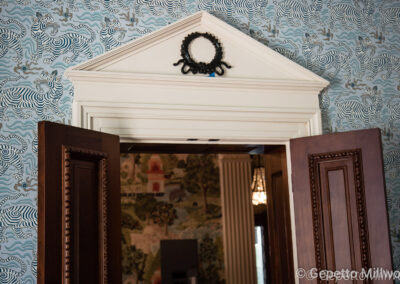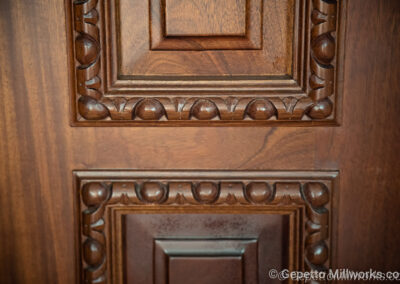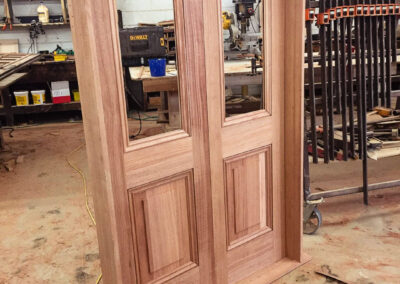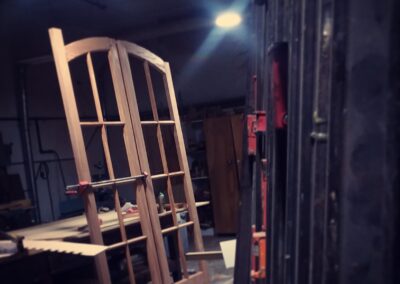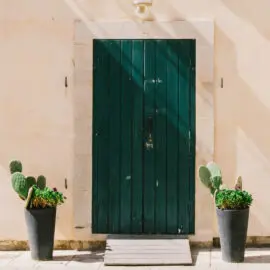Historic Wooden Doors
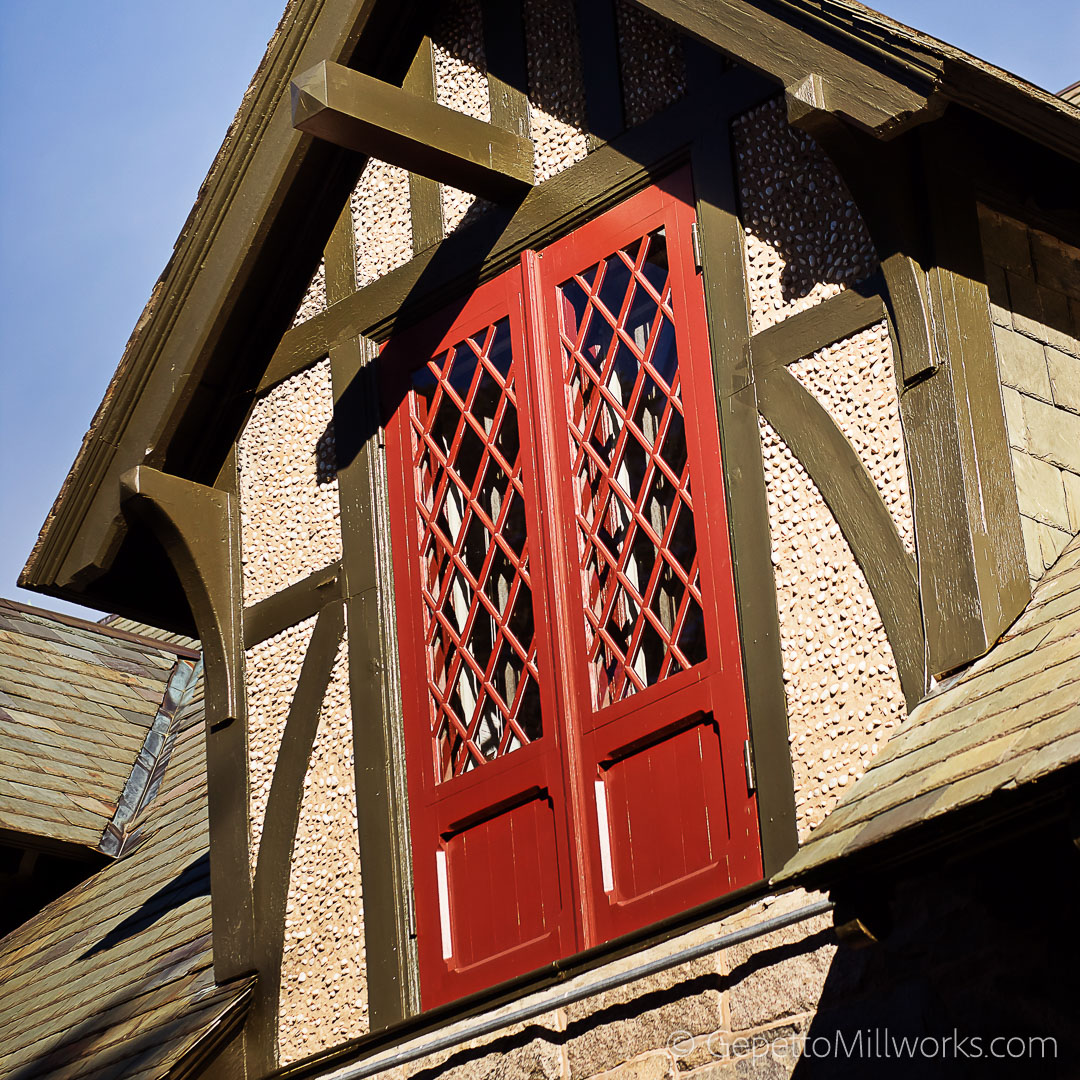

Architectural Firms:
- Glave & Holmes
- Commonwealth Architects
- Mario DiMarco – Pareto LLC
- DesignWORKS
GENERAL CONTRACTORS:
- Harper Construction : SC
- millwork supplier
- historic window supplier
- trim Matching
- casing rebuilder


Historic Wooden Doors
Handmade joinery used in The Colonial Williamsburg Foundation, George Washington’s Mount Vernon NHS, Henricus Historic Site Department of the Interior & National Park Service Approved Vendor Virginia State Historic Society & Societies of Richmond, Petersburg, Alexandria Approved VendorMount Vernon Restoration Supplier


Solid Wood Joinery:
- handmade in Richmond
- solid wood joinery
- all square traditional design
historical PERIODS:
- gilded Age 1870-1930
- Virginia Plantation Style
- Beaux-Arts
- SOLID WOOD LIBRARIES
- 18th Century restoration
- Mount Vernon
- williamsburg VA
Bring a historical building back to a state of usability and original beauty. All of Gepetto’s hand made doors start with the finest materials and historically accurate craftmanship with the utmost attention to detail. When your project involves historical renovation, Gepetto will replicate the most intricate detail matching historic records for tax credit approval.
Gepetto brings 20 years of millwork experience to your project, from writing proposals to generating architectural drawings clearly specifying your needs, Matt & Pam Wiley deliver custom build solid wood doors across the Southeastern United States.
Mullion
Strips of material used to hide seams between glass panes, or between door frames, side-lites, and transoms.Casing / Trim
Wood paneling or molding that surrounds the interior edge of a window or door frame. Used to cover the gap between the door frame and wall.Rough Opening
An opening in the wall made by standard framing materials, sized around a pre-hung unit. Usually 2″ taller and 2″ wider than the door unit size.Sidelite
The side panels on either side of the door. Filled with glass or wood and usually appear in pairs, though can exist solo.Brick Molding / Trim / Architrave
A molding used on an exterior door, typically applied to prehung units, put on the outside of the frame as a stop, or to hide brick, siding, stucco or concrete.
Side Jamb
The side vertical pieces of the door frame. The door hinges will be fastened to one of the side jambs, and the hardware will latch into the other.Sill / Threshold
The bottom or bottom piece of a frame. Usually made from aluminium or wood.Head Jamb
The top horizontal piece of the door frame.
1002-historic-church-restoration-wooden-doors-decorative-elements
Historic Church Restoration Wooden Doors & Decorative Elements
Bottom Rail
· The bottommost rail of the door.Center Stile
· A vertical element is used within a door to provide support.Frieze Rail / Intermediate Rail / Cross Rail
· A horizontal rail located within a door below the top rail.Hinge Stile
· The vertical edge piece that sits opposite to the lock and the hinges are attached to.Lock Rail / Middle Rail
· The horizontal rail is located within a door at the height of the lock.Lock Stile
· The vertical edge piece that sits opposite to the hinges and holds the lock.Panel
· The part of the door which is raised above or sunk below the level of the rest of the door to create depth.Rail
· The horizontal components of the door.Stiles
· The vertical pieces or edges of a door. These and rails form the frame of the door slab.Sticking
· The profile of the edge of the stile or rail that gives it definition and allows it to hold panels.Top Rail
· The topmost rail of the door.Clavos
· Decorative nails attached to a door that is meant to be seen. Ball Bearing Hinge · A hinge type that has ball bearings between the hinge knuckles to reduce friction and increase longevity. Cylindrical Lock · A lock type that utilizes only the bore hole to be installed. Flush Bolt · A bolt used on a non-active door to keep it stationary. It is flush with the face or edge of the door when retracted.Hinge
· The joint mechanism that holds the door and allows it to swing freely. Generally, one hinge should be used for every 30” of the door.Knob Closure
· A type of door handle that includes a knob to twist to open the door.Lever Handle
· A type of door handle that includes a lever to push down upon to open the door.Lockset / Hardware
· All of the mechanisms that keep the door shut and secured.Mortise Lock
· A lock type that requires a pocket to be milled into the door for it to sit.Multi-Point Locking System
· A 3 or 5 point lock system controlled by levers in multiple places in the door panel and frame. Used for protection against high-pressure winds caused by hurricanes and/or storms, as well as added security for the entryway.Radius Hinge
· A hinge type that has rounded corners and edges.Sill Pan
· A pan flashing that rests beneath the sill and is sealed or sloped to the exterior.Strap Hinges
· Long, horizontal metal pieces attached to doors, typically decorative to mimic holding the door.Strike Plate
· A metal plate attached to be flush with the door jamb that will receive the door bolt or the flush bolt, depending on location.Square Hinge
· A hinge type that has sharp corners and edges.Thumb Latch
· A type of door handle that includes a lever to be pressed by the thumb to open the door.Weather Strip
· A narrow strip that is flexible which surrounds the door to protect from moisture and air coming in when the door is closed.Backset
· The distance between the edge of the door to the center of the bore hole.
Came, Caming
· Metal stripping which is soldered at the joints, is used between cut-glass pieces to assemble the pieces into a decorative glass panel. Cames are mostly made of lead, zinc, copper, brass, or brass-capped lead.
Distressing or Antique EFFECTS
· A texturing technique that makes the wood look old or worn.
Door Lite(s) / Glazing
· The glass panel(s), or glass window(s) that are mounted inside a door.
Door Slab
· Only the door, no jamb, hinges, threshold, or door hardware.
Door Unit
· A door with a jamb, hinges, and is bored for door hardware. Exterior door units also include casing, brick molding, astragal, and weather strips and are pre-hung.
Mortise & Tenon Joinery
· A method of locking or joining / bonding two pieces of wood together through holes (mortise) and extrusions (tenon).
Mull Post
· The post between the door and sidelite is created by the door frame.
Muntin / Uprite
· A supporting vertical strip of wood or metal between panes of glass.
Ogee
· A type of sticking that is characterized by decorative curves.
Operable Sidelite / Vented Sidelite
· Sidelites that can be opened like a second door to allow airflow.
Pre – Hung
· A full door unit with the door hinged, jamb, frame, sill, and moulding.
Prefinished
· Products that are stained and sealed at the factory or warehouse before distribution.
Primed
· An undercoat that can be applied during the construction process that prepares the piece for painting.
Rabbet
· A stepped recess cut into the edge of the jamb pieces that allow them to fit at a right angle.
Rough Opening
· An opening in the wall made by standard framing materials, sized around a pre-hung unit. This is usually 2″ taller and 2″ wider than the door unit size.
Sash In Frame
· A type of construction for sidelites or transoms that has the glass held in a designed frame within the piece.
Shaker / Square
· A type of sticking that is characterized by a single right angle.
Shim
· A thin strip of material, typically wood, wedged between the jamb and the rough opening to secure and align.
Sidelite
· The side panels on either side of the door. Filled with glass or wood and usually appear in pairs, though can exist solo.
Tempered Glass / Safety Glass
· Treated glass that will crumble instead of breaking into shards.
Transom
· A mounted piece of glass or wood above the door unit. This is a decorative piece and sometimes comes with the door unit.
Transom Lite
· The glass panel(s), or glass window(s) that are mounted inside a transom.
Trim
· The covering over a door jamb gives the finished look. This is usually a strip of wood.









